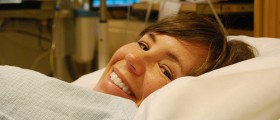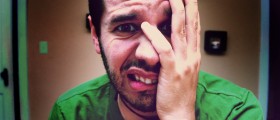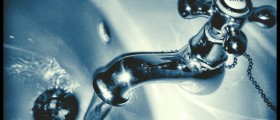Cystocele
A cystocele is a prolapse of the bladder into the vagina. The cause of this medical condition is the weakness of connective tissue that separates the bladder from the vagina. Apart from the bladder, other urinary tract organs such as the urethra may prolapse as well.
There are three grades of cystocele. The first one occurs when the prolapsed bladder is present only in the upper part of the vagina. In the second-grade cystocele, the bladder extends to the vaginal opening and finally, the third-grade is present when the bladder is obviously protruding through the vaginal opening.

Rectocele
Rectocele presents a protrusion of the rectum into the vagina. The cause of this medical condition is the weakness of the muscles that separate the rectum from the vagina. This condition can be caused by delivery, develop together with the process of aging, and can be a consequence of the previous surgical procedures performed in this area.
Hysterectomy is only one surgical procedure that can later result in a rectocele. In some women, rectocele may be a cause of painful intercourse. It also causes problems with stool elimination.
Causes of Cystocele and Rectocele
In most cases these two conditions are connected to multiple vaginal births. Additionally, persistent intrabdominal pressure can be a common cause of both, cystocele and rectocele. Women who suffer from these conditions are in menopause.
The lack of estrogen, which is a common event in menopause, additionally leads to the relaxation of the pelvic muscles making it easier for the bladder or rectum to prolapse. The best treatment modality for both conditions is surgery.
Initial Treatment and Surgery for Cystocele and Rectocele
The grade of the condition defines the treatment modality that is going to be applied. Namely, in mild cases, patients are advised to perform so-called Kegel exercises. These exercises will strengthen the muscles of the pelvis and keep the bladder and rectum in their original places. However, once cystocele and rectocele have occurred, the condition tends to progress and the majority of women finally need a surgical repair.
- In the Women's Health Initiative study, POP was detected in 41% of women in the age ranges of 50 to 59 years.
- This included cystocele in 34%, rectocele in 19%, and uterine prolapse in 14%. The incidence of prolapse surgery is 4.9 cases per 1,000 women, and the peak incidence of surgery is for women aged 60 to 69 years.
- Almost 58% of procedures are performed in women younger than 60 years, and recurrence rate was 13% and reoperation for prolapsed was undertaken within 5 years after primary surgery.
- Advancing age is one of the leading risk factors for POP. Both incidence and prevalence of POP increase with advancing age. As demonstrated by a study of about 1,000 females in the U.S., the risk of POP increased by about 40% with every 10 years of age.
- Lateral cystocele occurs when the pubocervical fascia and pubourethral ligament are separated from the arcus tendinosus fasciae pelvis (ATFP). Depending on the mechanism of the lateral cystocele, the aim of the surgery is to correct loose or detached pubocervical and pubourethral ligaments.
- Central cystocele is caused by the inability to support the pubocervical fascia in the midline of the anterior vaginal wall. The aim of surgical correction is to approximate an elongated or separated pubocervical fascia.
- Most cystoceles occur as a mixture of lateral and central defects. The purpose of the surgery is to correct the anatomical deficits that cause.
Mild to moderate cases of cystocele may benefit from a pessary which is placed into the vagina and prevents prolapse of the bladder. This device can be rather helpful, especially for those women who cannot be operated.
If the symptoms of the disease keep on the woman is surgically treated. In the case of large cystocele and rectocele, both of these organs are placed back in their natural place. The repair of the vagina wall is performed in all women who do not plan to have children anymore.
Problem with urinal incontinence, which is common in a cystocele, is also surgically solved. In rectocele, a surgeon repairs the tissue between the rectum and the vagina. The surgery is highly effective and can drastically reduce or even totally eliminate the problems caused by these two medical conditions.

















Your thoughts on this
Loading...